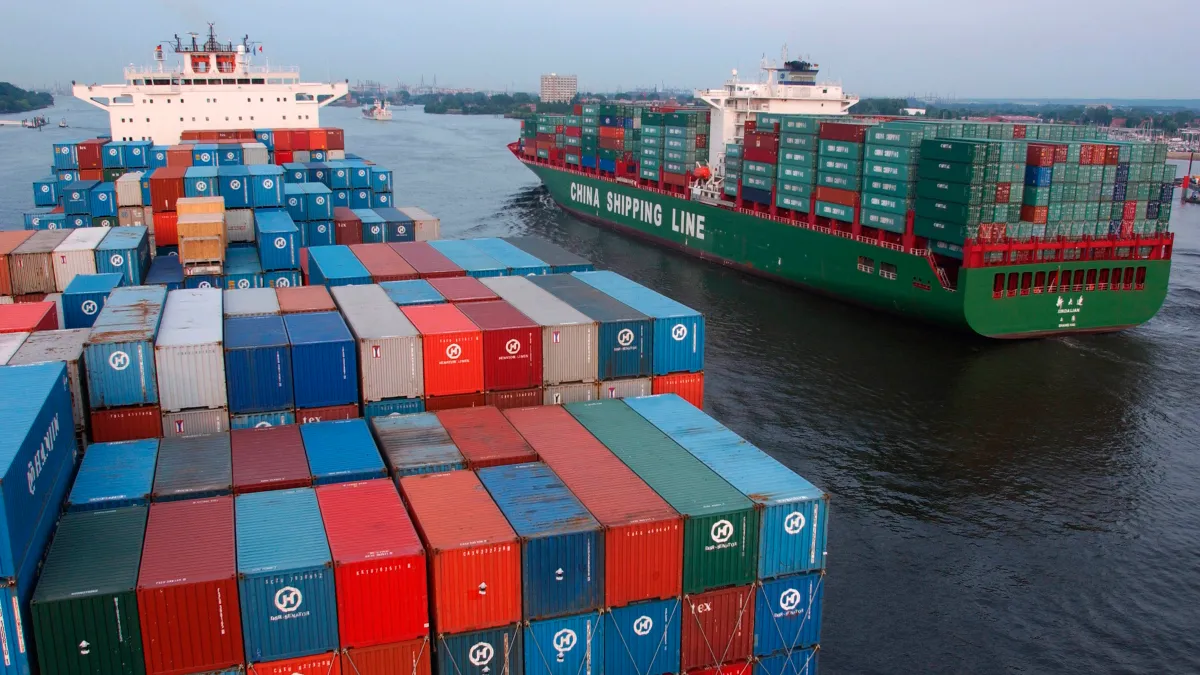
In this free resource on trade policy, explore how countries leverage their economic power to advance their foreign policy interests.
Last Updated May 12, 2023
Container ships from China pass at Blankenese on the Elbe Hamburg, Germany.
Source: Photo by plus49/Construction Photography/Avalon/Getty Images.
International trade is essential. No country can produce everything it needs at reasonable prices within its borders. Instead, a country will be richer if it makes what it is best at and imports what it is not as efficient at producing. That idea is known as comparative advantage. This is why the United States, for instance, sells airplanes to countries around the world but imports products like coffee and tea from elsewhere.
International trade has surged more than sixfold in the past thirty years. It has been a major driver behind economic and social development in the world. International trade has created millions of jobs, lifted over a billion people out of poverty, and strengthened international connections, leading to global stability.
Countries use trade to generate economic growth, which provides the resources societies need to function. However, governments can also leverage trade as a direct foreign policy tool to advance other national interests.

In today’s increasingly interconnected world, economic heavyweights—such as the United States, China, and the European Union—can promote their interests by wielding trade as an incentive (a carrot) and/or as a punishment (a stick).
Let’s first look at how countries can influence others by using trade as a carrot.
Strengthening partners: By using trade to bolster other countries’ economies, governments can improve their diplomatic relationships, create mutually beneficial economic arrangements, and promote development, which in turn supports stability.
Take trade between the United States, Canada, and Mexico, for example. In 1994, the three countries enacted the North American Free Trade Agreement (NAFTA). This agreement was designed to increase trade by removing or lowering trade barriers like tariffs and quotas. For the United States, NAFTA had an additional benefit: the agreement spurred Mexican manufacturing and grew the country’s middle class. As a result, fewer people felt pressure to emigrate to the United States, promoting stability at the southern border.
Incentivizing order: Trade can advance peace and prosperity by giving potential adversaries a stake in maintaining stability.
Following World War II, European leaders knew that to build a peaceful Europe and forge a united front against the Soviet Union, they had to reintegrate West Germany economically. But given the enduring trauma of the war, a strong Germany still inspired fear. Such feelings were especially strong in Germany’s next-door neighbor and historical rival, France. In 1950, France’s foreign minister proposed a simple solution: France and Germany could share resources, specifically the coal and steel industries in the region between the two countries. By setting up a common market, a kind of trade bloc in which countries agree to remove most barriers to trade (like tariffs), the European Coal and Steel Community created economic benefits for any European country interested in joining. (Ultimately, it had six founding members.) More importantly, the arrangement would make going to war too expensive and impossible to plan covertly.
Western leaders have used similar thinking to integrate countries into the liberal world order. This is the system of multilateral institutions and agreements that emerged following World War II to promote global cooperation on issues including security, trade, health, and monetary policy. The United States, for example, championed China’s bid to join the World Trade Organization (WTO), in part to promote internal political and economic liberalization and to give the country an incentive to respect the rules-based order. China joined the WTO in 2001, but its integration has largely failed to make it more democratic. Its joining has also not stopped China from violating international trade rules. Instead, China has taken advantage of the provisions that suit its interests while skirting less convenient restrictions.

A Chinese couple on a tricycle pass a billboard welcoming the country's membership in the World Trade Organization (WTO), along a street in Beijing in 2001.
Source: AFP via Getty Images.